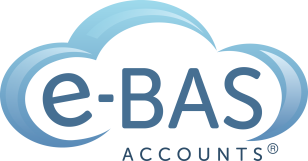Many SMEs are outsourcing their bookkeeping and BAS tasks to professional bookkeepers. This frees them up to get on with running their businesses and gives them peace of mind that their bookkeeping is correct and compliant. It’s a great thing to do especially if you loathe bookkeeping! While some SMEs prefer to employ an on-site bookkeeper, many are turning to virtual bookkeepers for assistance. So just what is a virtual bookkeeper and how do you work with one?
 What’s a Virtual Bookkeeper?
What’s a Virtual Bookkeeper?
A virtual bookkeeper is someone who works remotely, utilising current technologies and the internet to complete bookkeeping and other tasks for his clients. Virtual bookkeeping is not location-dependent. A virtual bookkeeper can offer services to clients Australia-wide (or perhaps worldwide), without leaving his office. The internet, current technologies, and cloud services all make this possible.
How to Work with a Virtual Bookkeeper
Some business owners are hesitant to use a virtual bookkeeper because they just don’t understand how the whole process works. They can’t get their heads around using a bookkeeper who lives in another town or state for their bookkeeping needs. So just how does this virtual thing work? For the virtual relationship to be successful and beneficial, the virtual bookkeeper must have a proven system in place which nurtures this success. Here is the virtual bookkeeping system we use at e-BAS Accounts:
1. First Consultation
After the initial contact with a new client, an appointment is set for the first consultation. This meeting can be held via telephone, Zoom, Google Meet, and other video conferencing apps e.g. Any Meeting. At this meeting, the client’s bookkeeping assignment is discussed in-depth and created.
2. Legal Stuff
A client and confidentiality agreement is drafted and sent to the client via email, mail, or fax for signing. Once the agreement is signed, the bookkeeping can begin! Some practices call this an engagement letter.
3. Accounting Software
Clients can choose between desktop-based platforms like MYOB or QuickBooks and cloud-based software like Xero, Saasu, or MYOB Live Accounts. Desktop data files can be emailed (file size dependent), shared via Dropbox, uploaded to our secure online storage facility, and/or sent via mail on a USB drive or CD format. Cloud-based software files are shared with us via an invitation that the client sends to us to become a user of their file online.
4. How Clients Send us Source Documents
Firstly, we send our clients a checklist to help them prepare their source documents for us. We list all data required and provide guidance on how to organise this data before sending it. Clients use various methods to send their bookkeeping documents to us! These include:
Our free secure online transfer system via our website. Clients are provided with login details and can upload/download their files to us anytime. This of course means that some data needs to be scanned first by the client in order to create files for upload. Many new printers/scanners can scan documents quickly and in bulk and we recommend that our clients purchase one of these machines in order to do their scanning. If clients don't want to do this then we also recommend that they use Shoe-boxed, an online scanning service. Files created by Shoe-boxed also have the added advantage of being able to sync across to online accounting platforms like Xero and Saasu which is a great time-saver!Adding their documents to Dropbox. Dropbox is an online storage facility that users can share with others as required. Clients simply share their accounts folders with us and we can access the information from the Dropbox account on our computers. Another online sharing service is Box - this is an alternative to Dropbox but works in a similar fashion. Google has announced their file storage offering called Google Drive which works in a similar fashion to Dropbox - another option!Posting their documents to us via Australia Post's Express Post. Some clients also choose a courier service to send documents if they have lots of documents. Some client simply fax their data across to us although this becoming less common.Emailing data. (Some files are too large to be emailed so other methods such as those mentioned above are used instead).
5. The Bookkeeping Stage
Once we receive the client’s documents, we get to work! We will process the data into the client’s chosen accounting software whether this is cloud-based or desktop-based. Clients are kept up to date with the progress of their bookkeeping assignments on a regular basis via email and/or telephone.
6. The Reporting Stage
Once all bookkeeping is complete, we process various financial reports for the client. We then send these reports via email or share them via the client’s chosen method e.g. Dropbox.
7. Monthly Meetings
Every client is required to attend a monthly meeting at which the previous month’s bookkeeping is discussed. This is compulsory as communication is the key to a successful virtual bookkeeping relationship. Because we do not see or visit our clients regularly (sometimes never!) in person, it is possible for the virtual relationship to fall over – “out of sight, out of mind” as the saying goes. Not only are these meetings necessary to ensure that nothing is forgotten or misinterpreted in relation to a client’s accounts, but they also ensure there is a personal level of contact maintained between the bookkeeper and client, something that no amount of emailing and texting can accomplish!
8. Returning Data to Clients
Data that is posted to us is posted back to clients at no cost to them. Data that is shared with us via Dropbox (or another sharing app) is retained in the shared folder at the discretion of the client and data which has been uploaded to our secure online storage facility remains in the client’s account until such time as the client may wish to terminate the bookkeeping agreement.
So that’s how we make virtual bookkeeping work at e-BAS Accounts! Does this work 100% of the time? No of course not! Things do go wrong but most of the time this system is fail-safe. It allows us to operate a successful virtual bookkeeping business that is not location-dependent all from the comfort of our lovely seaside office here in Torquay, Victoria! Perfect!












 What’s a Virtual Bookkeeper?
What’s a Virtual Bookkeeper?